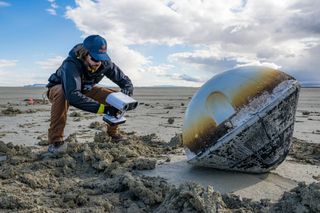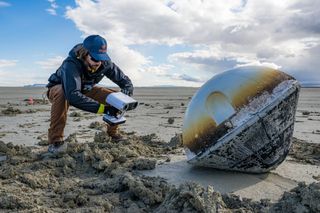On Feb. 21, after some seven months in space, Varda Space Industries’ W-1 capsule successfully returned to Earth, carrying with it a unique payload: the HIV/AIDS medication ritonavir.
Varda Space seeks to autonomously manufacture pharmaceuticals in microgravity, a strategy that could ultimately reduce the cost of life-saving drugs — and, according to a new preprint paper, the company is one step closer to achieving that goal.
The W-1 mission sought to test the feasibility of making therapeutics in space, testing Varda’s hardware off Earth for the first time. During its time in orbit, the W-1 capsule successfully crystalized the metastable Form III of the antiviral drug ritonavir, which then survived its return to Earth. The space-processed ritonavir has since been analyzed, and per an X post by Varda Space cofounder Delian Asparouhov, “[t]hem space drugs cooked real good.”
Related: See Varda Space’s private in-space manufacturing capsule’s historic return to Earth in photos
The mission’s data, now published in the preprint paper, also provides crucial information about the effects of spaceflight and reentry — such as vibration, acceleration, radiation and temperature — on the pharmaceutical-production process.
“By providing a detailed experimental dataset centered on survivability, we pave the way for the future of in-space processing of medicines that enable the development of novel drug products on Earth and benefit long-duration human exploration initiatives,” states the paper’s abstract.

RELATED STORIES:
While pharmaceuticals have been processed in microgravity on parabolic flights and the International Space Station, Varda Space’s method aims to be more efficient and cost-effective, using uncrewed capsules that serve dual purposes as a mini-factory and a reentry vehicle.
The company now hopes to inspire others to consider the viability of space-processed pharmaceuticals. “Together with our hypergravity platform, Varda’s rapidly advancing the landscape for drug development using microgravity,” wrote Varda Space in a thread on X. “Our mission is to now enable cost-effective high-cadence access to enable next-generation therapeutics.”



